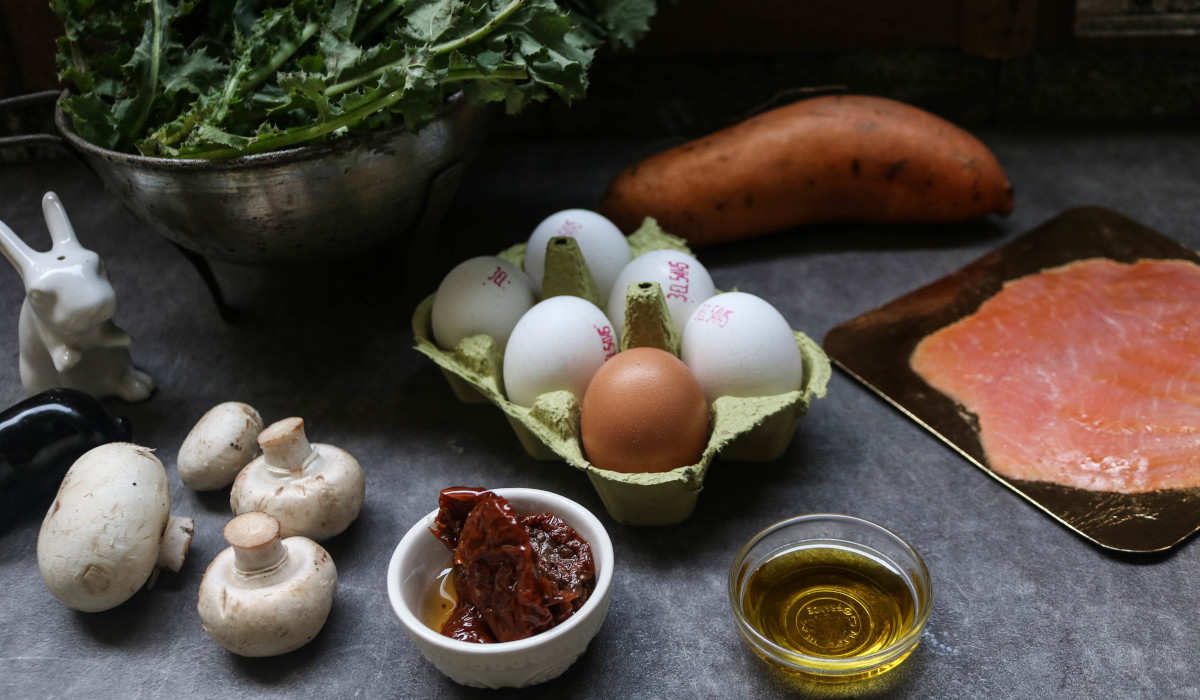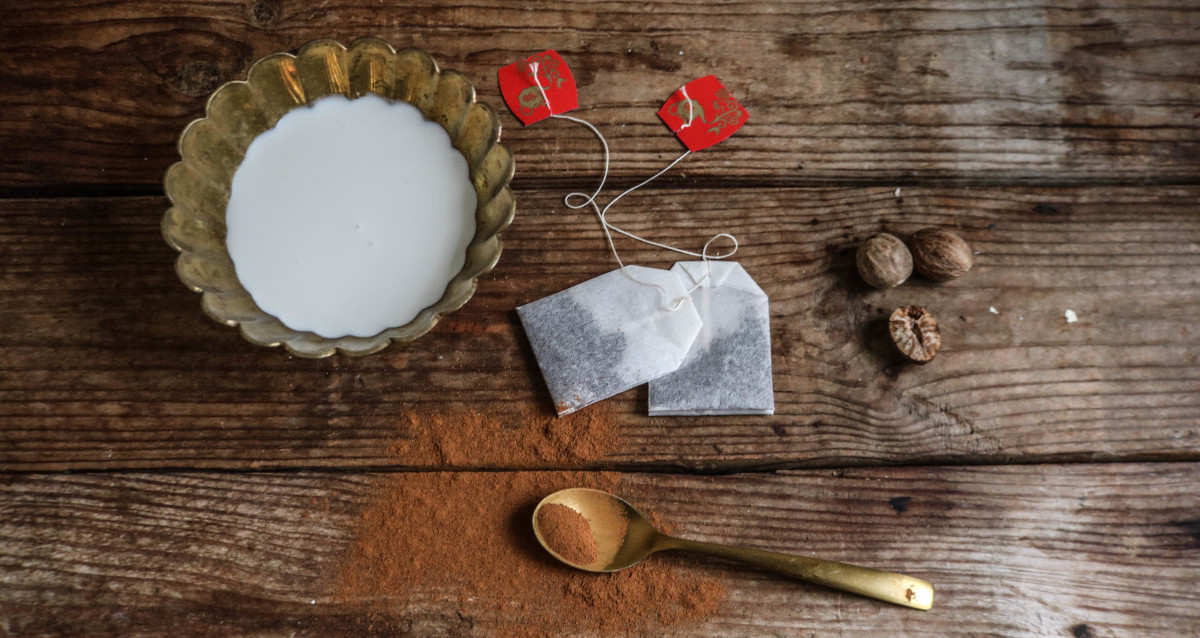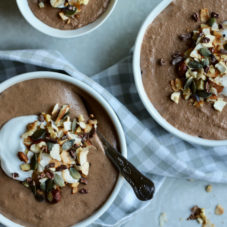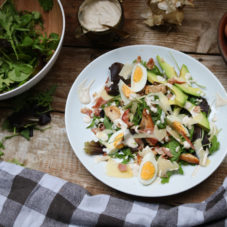What should you eat on the keto diet? What should be on your keto diet food list? Can you eat some carbs while on keto? In this article, we are going to answer all your questions and help you jump start your keto journey.
Table of Contents
What is Keto?
There is a lot of discussion on the media about the benefits of the keto diet and it is normal that many people want to try it. The main principle of the ketogenic diet is that your body’s fuel supply is fat instead of carbohydrates and your body burns fat all day. Since there are no carbs to be used as an energy source, insulin levels become very low resulting in a significant increase in the rate of the burning fat (1).
Types of Ketogenic Diets
Despite the main principles that characterize the ketogenic diet, there are many versions of the ketogenic diet. The most popular are briefly described in the next lines:
Standard ketogenic diet: Its protein content is moderate, it is high in fat, and very low-carb diet, providing most of the calories (¾) through fat and the remaining 25% through protein (about 20%) and carbs (5%).
High-protein ketogenic diet: It is an alternative version of the standard ketogenic diet. The difference is that it includes more protein (approximately 35% instead of 20%) reducing the fat content to 60% instead of 75% while the carbs remain at 5% of the total caloric intake.
Cyclical ketogenic diet: It can be separated in 2 parts-periods: a ketogenic period of 5 days followed by 2 high carb intake days.
Targeted ketogenic diet: It is designed specifically for athletes because it allows adding carbs before and after workouts to maximize the recovery and the performance of the athletes.
There are wider use and more research on the standard and high-protein ketogenic diets because of their safety and effectiveness.

Keto Diet Food List Essentials
The basic guidelines of the ketogenic diet:
Fats will be the largest macronutrient of your diet. The sources of fat can be meat, nuts, dairy products and of course, oils including olive oil, butter, coconut oil, and others.
Protein – as mentioned before it is about ⅕ of the total caloric intake. The main sources of protein are meat, fish, nuts, and eggs. To avoid the hormones of the meat it would be ideal to eat organic, pasture-raised, grass-fed and/or wild (fish) whenever possible.
Vegetables are important to provide fiber and many necessary micronutrients like vitamins and minerals. Those that grow above-ground (especially leafy greens) tend to be lower in carbs.
Nuts and seeds provide protein, fiber and fat, but they also have varying amounts of carbs so you cannot consume unlimited portions of them. They can be used to add some great flavor and texture to many dishes.
Dairy tends to be high in fat and has varying levels of protein and carbs. Hard cheeses are a great way to add flavor without carbs.
Fruit should be eaten in small quantities because they usually are high in sugar, and generally carbs. You should carefully choose the fruits so that their content in simple carbohydrates is as limited as possible.
Beverages should include water as the main ingredient. Water is the best choice and can be flavored with a wedge of lemon, lime or several herbs. Additionally, you can consume coffee or tea but without any added sugar or honey.
There is so much more to know about each of these food groups. Let’s go more in-depth to get more specific instructions on what can be consumed while you are on a ketogenic diet.
Fat – the Largest Nutrient on Your Keto Diet Food List
Although there is a lot of discussion about the consumption of a diet with a lot of fat, nowadays there is still a debate on this topic. The point is on the reason for following such a diet and the ratio of risk vs benefit. For the group of people that a keto diet is suggested after evaluating the above- mentioned factors, the reduction of the number of carbohydrates they eat, will lead to an increase in the protein and mainly the fat that they consume to meet their energy needs. Fat adds flavor and satisfaction in our meals and when it is combined with the protein it results in a satisfying meal, especially when you have some added fibers in your plate.
There is a 2017 study reporting that higher intakes of saturated fatty acids (fats from meat-dairy sources) were not associated with higher risks of coronary heart disease or stroke(2). On the other hand, there are studies that show that the consumption of monounsaturated fatty acid (MUFA), and polyunsaturated fatty acid (PUFA) results in a lower risk of cardiovascular disease and death compared to the consumption of saturated fatty acids(3).
The American Heart Association/American College of Cardiology lifestyle guidelines and the 2015 to 2020 Dietary Guidelines for Americans suggest shifting from saturated to unsaturated fats, meaning to prefer the consumption of oils such as olive oil and other plant-based oil sources(4). Additionally, avoiding the trans fats (which are created during the hydrogenation, or saturation, of oils) would also improve the quality of your fat intake.
Keep in mind, though, that being able to enjoy fat is very different from just eating any amount of fat that you want. The amount of fat you consume varies from person to person depending on your energy needs and activities, but if you start with a good macro calculator that is designed for keto, you can experiment to find the range that is right for your needs. Your body will use fat for energy, but if you eat too much, it will be stored as body fat.
There is another component to choosing fats: Omega-3 vs Omega-6. A healthy balance is needed, but the standard American diet favors a ratio that is much too high in omega-6s, which is bad for your health. Grass-fed and pastured animals have much better ratios than conventionally-fed animals. Moreover, you can eat nuts to get a good ratio of omegas.
Healthy fat can come from several sources:
- Fish
- Eggs
- Nuts
- Flaxseed oil
- Cocoa butter
- Olive oil
- Avocado oil
- MCT oil
Fats to avoid:
- The fat contained in packaged foods like (biscuits, sweets, etc.)
- Margarine
- Shortening and fake lard (hydrogenated vegetable oil)
One more big point about fat: overheating fats and oils can cause oxidation, which damages fatty acids. Therefore you should avoid frying your food and using the same oil to cook many times.
Protein – the Pillar of Your Keto Diet
Protein is one of the pillars of the keto diet. It provides amino acids for repairing and building muscles and contributes to many body processes.
It is important to get a good quality of proteins or make the right food combinations that will provide you all the necessary amino acids. As discussed above, grass-fed and pastured animals provide a better quality of protein and a better ratio of omega fats. Wild, fatty fish (especially those that are small and fast-growing) are a better choice than farmed fish but you should choose small fishes to limit the chances of mercury contamination.
Meat is a must food while you are on a keto diet, therefore you should choose any kind of meat since its protein quality is superior compared to any kind of plant-based protein source. Good sources of protein:
- Meat (beef, pork, lamb, goat, etc.)
- Poultry (chicken, turkey, duck, etc.)
- Game (venison, goose, etc.)
- Fish and shellfish
- Offal or organ meats (liver, heart, gizzard, tongue, kidney, etc.)
- Eggs
- Nuts (keep an eye on the fat content)
Vegetables – Your Source of Fiber
This is where it can get tricky. Vegetables can really help fill out a meal, but they (and fruit) mainly provide carbohydrates with varying amounts of fiber. Some are very high in fiber and can be eaten in large portions, others can be used moderately and some should be avoided.
Sweet and starchy veggies need to be consumed in limited portions. Potatoes, rice, carrots, beetroots, etc. are part of this group that should be consumed very carefully.

On the other hand, leafy, green vegetables should be a staple of your keto diet food list. You can eat as much lettuce, kale, spinach, and green beans as you want. Bell pepper, cabbage, and mushrooms are also nice and low in carb content. When you start to get into flowering veggies (like broccoli and cauliflower) and fruiting veggies (like squash) the carb counts start to go up, but you can still enjoy them.
Nuts and Seeds
These consist of a combination of fat with some protein, fiber, and carbs. Depending on the nut and seed, you can eat small portions of these and still stay within your macros. They can provide great flavor and texture on a salad or main dish, be part of a grain-free substitute for baked goods or you can enjoy them on their own as a snack.
Nuts are tasty, and salted nuts tend to make us want more. We should consume them moderately and try to avoid the salty and baked ones and prefer to eat them raw.
Pecans, brazil nuts, and macadamia nuts are the best options, but you could also enjoy hazelnuts, peanuts, walnuts, almonds or pine nuts with more moderation. Pistachios, cashews, and chestnuts are very high in carbs and will very quickly use up your daily carb allowance.
As for seeds, pumpkin, chia, and flax seeds are good options. Sunflower seeds are a touch higher in carbs and should be eaten with moderation.
Dairy
Butter, cream, and cheese are the main items here. They provide lots of delicious flavors, especially if you combine them for a lovely Alfredo sauce to put on your broccoli! These items are pretty high in fat, but cheese has protein too.
Milk, unfortunately, is fairly high in carbs due to the lactose (milk sugar). A single cup of milk has a full day’s carb count. However, when the cheese is made, the lactose is used up by the cultures that create the curds, so any firm cheese (like cheddar or Parmesan) is likely to be free of carbs. Some softer cheeses, like brie and mascarpone, are also carb-free. The exception to this is low-fat cheese – they’ll use starches to help it along, so make sure you get full-fat cheese and just watch the portions.
Yogurt tends to be high in carbs, even when it is full-fat and plain. Greek yogurt will be the best option, but even that can be high in carbs, so check the nutrition info.
Some people find that dairy creates stalls in their weight loss. This is an individual thing, so if you think that might be happening to you, try cutting dairy and see if it makes a difference. Just keep in mind that if you aren’t counting, it could just be due to excess fat.
Fruit – How Does It Fit the Keto Diet Food List?
While fruit is delicious and full of fiber, the fruit is nature’s candy. This means that all fruit should be eaten in moderation. Small tart berries, like blackberries and raspberries, are the options with the least carbs. Things like melons, cherries, peaches, and apples are in the middle; be careful with them. Grapes and bananas are the highest. In fact, one banana can be more than a day’s carb allowance!
Used sparingly, fruit can provide a nice burst of flavor or a keynote in a dish. Enjoy them, but be careful.

Beverages
Your best bet is water. It’s always a good idea to get plenty of it. Tea and coffee (without any sugar or honey) are fine too, and you can make them keto proof or “bulletproof” by adding some fat to them if you want. Another great hot option for cold days is bone broth, though it does have fat and protein to count. Juice, since it’s from fruit and naturally high in sugar, is not keto-friendly. On the other hand, you can make some juices that include spices and some veggies like spinach that do not add any extra carbs in your diet.
While there are many non-caloric beverages, a lot of them use sweeteners that trigger an insulin response and should be avoided. Sugar-free sodas and the like can cause sugar cravings too, which is another reason to avoid them. If you do want to have “non-caloric” beverages, try to stick to stevia-sweetened; it doesn’t affect insulin levels.
What Shouldn’t Be on Your Keto Diet Food List?
We’ve given items to avoid in each section above, but there are a couple of things that need special attention here: sweeteners and grains. These things are composed mainly of carbohydrates.
Sugar and Other Sweeteners
Sugar itself is straight carb without even any fiber to subtract. That makes it an obvious item to stay away from, and that includes brown, and coconut sugar. Honey, maple syrup, agave, and other syrups are can’t be on your keto diet food list.
As mentioned under beverages, many sweeteners cause an insulin response. Some of them vary by the individual, but dextrose and maltodextrin are generally not considered keto-friendly. Most of the sugar alcohols (like maltitol) do cause a glycemic response and have higher net carbs, and several are known for their laxative effect. Erythritol is an exception, however, as it is quite low in carbs and has no glycemic response.
The best and most-acceptable sweeteners on keto are:
- Stevia
- Erythritol
- Monk fruit
- Sucralose (pure, don’t confuse with Splenda)
- Inulin fiber
- Blends of the above
Very dark chocolate (85 or 90 percent cocoa) is often acceptable in small amounts but only if it is not consumed frequently. It can make a nice treat to have a square or two. Watch the portion sizes, as they can be tricky.
Grains
Grains are primarily starch, and “whole grains” with their fiber aren’t much better. All grain products, such as these, need to be avoided:
- Pasta
- Bread
- Corn
- Rice
- Cereal
- Cakes and cookies
- Beer
According to a recently published meta-analysis (2020), low-carbohydrate diets have a beneficial effect on cardiovascular risk factors, thus limiting your carb intake (especially the simple ones) that will improve your overall health(5).
Watch out for Hidden Carbs!
There are some things – like beer – that you may not realize have carbs. And sometimes food companies shrink serving sizes in the nutrition info to make them look better. Check labels (both ingredients and nutrition info) carefully and don’t get fooled.
Some places carbs hide:
- Low-fat products usually end up with starches and fillers to thicken them or add flavor. This can be a problem in dressings, dairy and more.
- Condiments can have added sugar or starches. Ketchup and barbeque sauce are good examples with added sugar and small serving sizes.
- Seasonings, such as dried garlic and onion, allspice, cinnamon, and ginger, can be surprisingly high in carbs. Don’t be afraid of seasonings and spices, but make sure not to overdo it.
- Tomato products can be high in carbs too. Tomatoes themselves are fairly high, but companies often add sugar to tomato products, like tomato sauce and ketchup.
- Medicine is something you might not even consider, but many will use sugar syrups to make them more palatable. Look for sugar-free options if you can remember that when you are unwell.
How to Make Your Own Keto Diet Food List?
Being on a keto diet is challenging especially during the first days-weeks and there can be a lot of cravings. Sugar engages the reward center of the brain and can result in addictive-type behaviors. Instead of having to fight off cravings all the time, remove foods that aren’t keto-friendly from your fridge, pantry, and workspace. It is much easier to stick to the plan if carbs aren’t sitting around calling to you. Plan ahead and bring keto-friendly snacks like hard-boiled eggs or nuts if you have a place or time that you usually grab a snack. Try to have plenty of meals during the day to avoid hunger and fuel your body without starving.
Try to eat less processed products and avoid alternative sweeteners which can extend the initial craving time. Focus more on the quality of your food because eating good food will help you get all the vital nutrients that you need to be strong and healthy.
Stick to the above principles and it will get easier. You’ll gradually start to feel really great and adopt a new lifestyle. Like us, you may decide that this is the way you want to eat for the rest of your life.
References
1) Publishing, H., 2018. Should You Try The Keto Diet? – Harvard Health. [online] Harvard Health.
Available at: https://www.health.harvard.edu/staying-healthy/should-you-try-the-keto-diet [Accessed 10 March 2020].
2) Nettleton, J., Brouwer, I., Geleijnse, J., and Hornstra, G., 2017. Saturated Fat Consumption and Risk of Coronary Heart Disease and Ischemic Stroke: A Science Update. Annals of Nutrition and Metabolism, 70(1), pp.26-33.
3) Guasch-Ferré, M., Babio, N., Martínez-González, M., Corella, D., Ros, E., Martín-Peláez, S., Estruch, R., Arós, F., Gómez-Gracia, E., Fiol, M., Santos-Lozano, J., Serra-Majem, L., Bulló, M., Toledo, E., Barragán, R., Fitó, M., Gea, A. and Salas-Salvadó, J., 2015. Dietary fat intake and risk of cardiovascular disease and all-cause mortality in a population at high risk of cardiovascular disease. The American Journal of Clinical Nutrition, 102(6), pp.1563-1573.
4) Sacks, F., Lichtenstein, A., Wu, J., Appel, L., Creager, M., Kris-Etherton, P., Miller, M., Rimm, E., Rudel, L., Robinson, J., Stone, N. and Van Horn, L., 2017. Dietary Fats and Cardiovascular Disease: A Presidential Advisory From the American Heart Association. Circulation, 136(3).
5) Dong, T., Guo, M., Zhang, P., Sun, G. and Chen, B., 2020. The effects of low-carbohydrate diets on cardiovascular risk factors: A meta-analysis. PLOS ONE, 15(1), p.e0225348.









